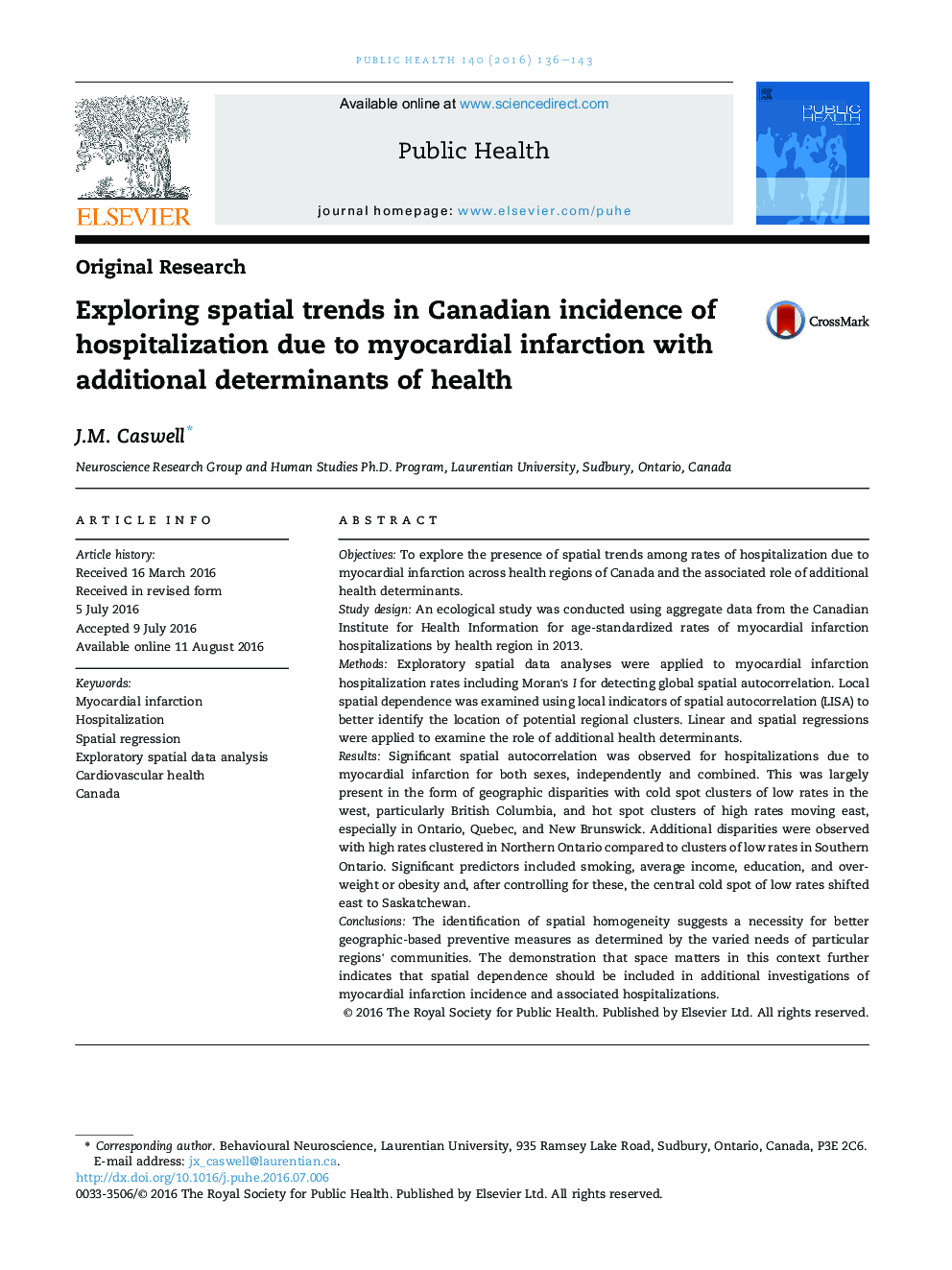| کد مقاله | کد نشریه | سال انتشار | مقاله انگلیسی | نسخه تمام متن |
|---|---|---|---|---|
| 5122835 | 1487203 | 2016 | 8 صفحه PDF | دانلود رایگان |
- Myocardial infarction hospitalization rates were examined from 2013 in Canada.
- Spatial homogeneity was identified across health regions.
- Regression identified smoking, overweight and obesity, average income, and education as significant predictors.
- Spatial trends of high rates remain apparent after controlling for socio-economic and health behaviour factors.
- Hot spots of high rates of hospitalization were largely observed for Northern Ontario and Quebec.
ObjectivesTo explore the presence of spatial trends among rates of hospitalization due to myocardial infarction across health regions of Canada and the associated role of additional health determinants.Study designAn ecological study was conducted using aggregate data from the Canadian Institute for Health Information for age-standardized rates of myocardial infarction hospitalizations by health region in 2013.MethodsExploratory spatial data analyses were applied to myocardial infarction hospitalization rates including Moran's I for detecting global spatial autocorrelation. Local spatial dependence was examined using local indicators of spatial autocorrelation (LISA) to better identify the location of potential regional clusters. Linear and spatial regressions were applied to examine the role of additional health determinants.ResultsSignificant spatial autocorrelation was observed for hospitalizations due to myocardial infarction for both sexes, independently and combined. This was largely present in the form of geographic disparities with cold spot clusters of low rates in the west, particularly British Columbia, and hot spot clusters of high rates moving east, especially in Ontario, Quebec, and New Brunswick. Additional disparities were observed with high rates clustered in Northern Ontario compared to clusters of low rates in Southern Ontario. Significant predictors included smoking, average income, education, and overweight or obesity and, after controlling for these, the central cold spot of low rates shifted east to Saskatchewan.ConclusionsThe identification of spatial homogeneity suggests a necessity for better geographic-based preventive measures as determined by the varied needs of particular regions' communities. The demonstration that space matters in this context further indicates that spatial dependence should be included in additional investigations of myocardial infarction incidence and associated hospitalizations.
Journal: Public Health - Volume 140, November 2016, Pages 136-143
